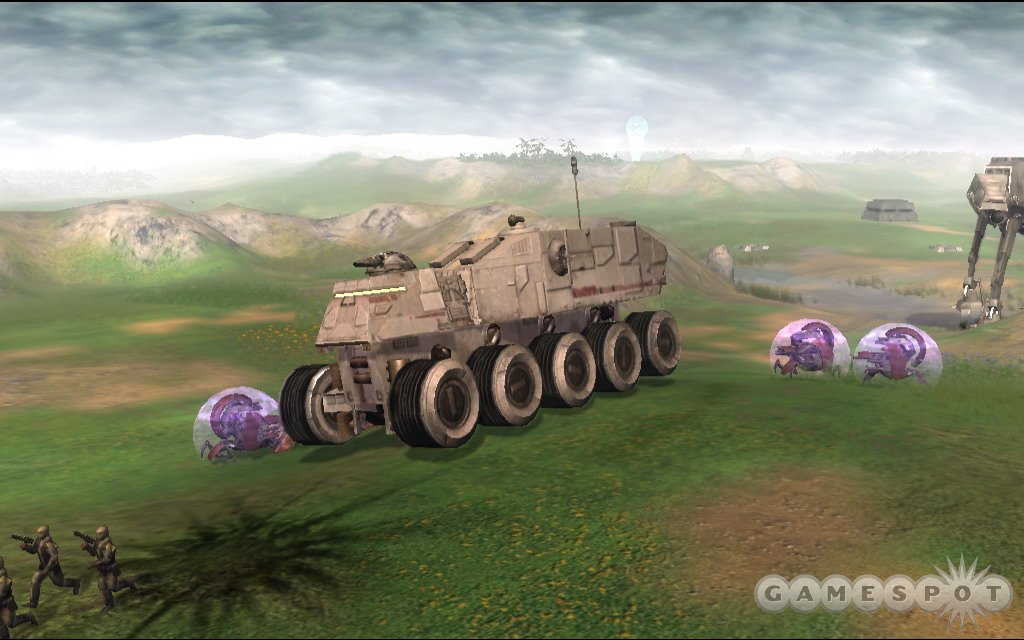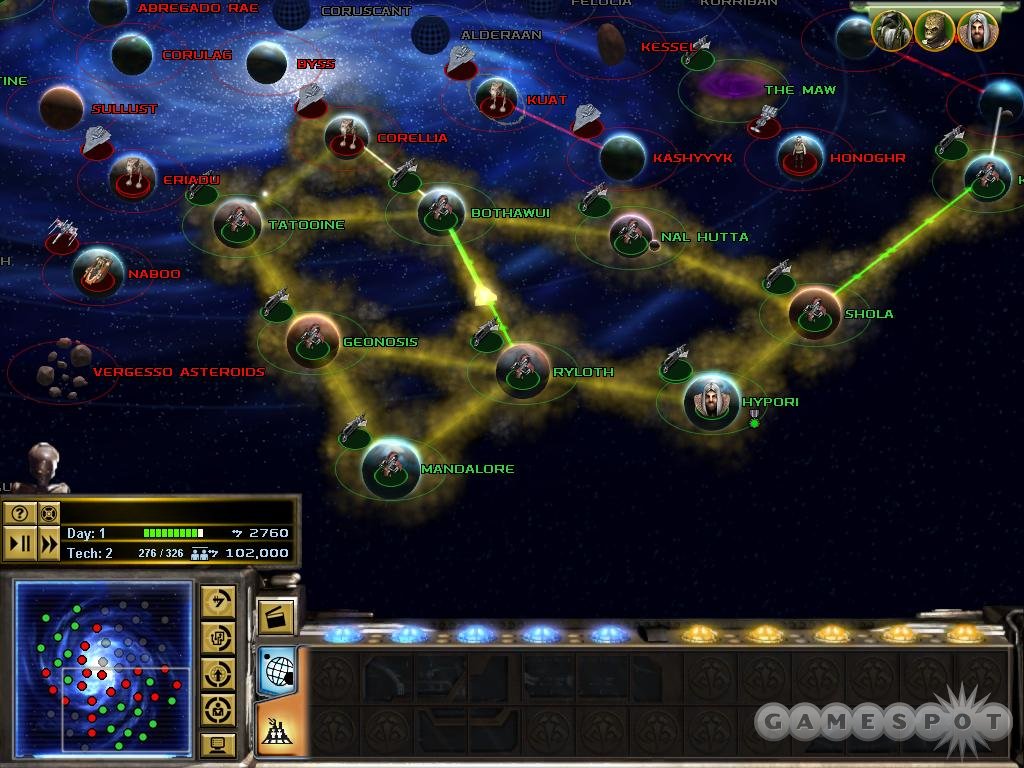Star Wars: Empire at War: Forces of Corruption Designer Diary #2 - Improving the Game
Designer Joe Bostic gives us more on the new Underworld faction and explains how Petroglyph is also expanding ground combat in a significant way.
Star Wars: Empire at War made quite an impression on gamers when it shipped earlier this year. This real-time strategy game is set during the classic Star Wars movie trilogy, when the Rebel Alliance fought the Galactic Empire. Empire at War features both ground and space battles. You send fleets to battle for space superiority over a planet and then dispatch ground forces to seize the planet itself. While it was cool to control Star Destroyers, X-Wings, and other famous craft from the Star Wars universe, there were some notable absences as well, such as Darth Vader's Super Star Destroyer. The good news is that many of these missing craft will appear in Star Wars: Empire at War: Forces of Corruption, the upcoming expansion due out later this year.

The expansion won't just introduce a bunch of new vehicles for each of the two existing factions, however. It will also introduce a brand-new third faction--the Underworld--which is made up of the seedier element of the Star Wars movies, made famous by smugglers and crime bosses such as Jabba the Hutt. This new faction isn't a mirror of the existing Rebel and Imperial factions, either; it plays in a completely new way. For more on all the changes in the expansion, we turned to Joe Bostic, director of game design at Petroglyph.
Why Corruption is Good
By Joe BosticDirector of Game Design, Petroglyph
Creating an expansion product provides a valuable opportunity to reflect on the state of the original game while also providing the opportunity to improve upon it. Thanks to LucasArts and the many fans of Star Wars: Empire at War, we've been given that opportunity through Forces of Corruption. Looking at Empire at War in hindsight, we can see that there are areas of the game that turned out different than originally planned and some areas where we wanted to improve the game experience but didn't have the resources at the time. Fortunately, the expansion gives us the opportunity to address some of these issues.
In an overall sense, the two factions of the original game, the Rebel Alliance and the Empire, have many similarities. This is partly due to the established fiction of Star Wars and partly because the game revolves around physically conquering systems. This similarity was responsible for the creation of something totally new and different in Forces of Corruption--the Underworld faction. The Underworld is largely different from the Rebels and the Empire, in that it can conquer and build if it wishes to, but it has underhanded tricks and even the ability to gain many of the benefits of conquering a system without actually having to fire a shot. The Underworld has many ways to "break the rules" of the game, in a sense, which greatly changes the strategic level of gameplay. Such powers and abilities make the Underworld side very powerful, but unlike the Rebellion and the Empire, cash is its lifeblood. If the Rebellion or Empire player can cut off the Underworld's cash or force it to spend excessively and unnecessarily, the balance of power shifts. A wise crime lord is also a shrewd businessman--moving decisively, but only where the rewards outweigh the investment.

Early in development of Empire at War, the greatest unknown we identified was how to make space combat fun. There were serious debates on whether it should support full 3D movement, allow micromanaging of ships, or even be abstract to the point where the player would only issue crude commands to the fleet and the artificial intelligence would do all the moving and attacking. Space combat became a compromise of 2.5-dimensional movement, real-time-strategy-style command of units, and micromanaging of special abilities. The result turned out better than expected, and I can honestly say that if I had to pick one area of the game, space combat is the most entertaining for me. In Forces of Corruption, we didn't want to let space combat stagnate, so we added a great deal of new tactical options and strategies.
Of course, we had to add the familiar ships from the classic Star Wars trilogy, especially Darth Vader's Super Star Destroyer. However, the real gameplay advancement comes from the fact that the Underworld can "break the rules" of the game when the Rebel Alliance and the Empire cannot. No longer can you be sure that an asteroid field doesn't hide capital ships. Or your shields may be turned against you by having their energy siphoned off. In fact, you can't even be sure that clear space is actually clear, as there may be a cloaked ship stalking you. All this adds up to giving space combat a greater depth of play, being more unpredictable, and even being a bit underhanded.
During the design phase of Empire at War, it became clear that the number of land battles could potentially be greater than in any other contemporary real-time strategy game. Typical real-time strategy land battles in games that featured resource harvesting and base building could take an hour or even longer. The goal of Empire at War was to keep land battles short and intense, so in-battle harvesting was eliminated and base building was greatly limited to only turret placement. Though I believe our intent was still good, in hindsight, this proved to be more restrictive than necessary.

In Forces of Corruption we are significantly expanding land combat. This not only extends to letting you configure your base layout, but also includes many tactical elements that make combat more dynamic and less predictable. For example, the terrain itself will become even more important. Now you can battle on a planet where the vegetation can be a lethal foe or where you can actually summon a rancor to do your bidding. One such tactic I find enjoyable is placing a thermal detonator on an enemy vehicle and then waiting until the opportune time to detonate it.
It seems that we've added even more tactical elements to land combat than we have to space combat, if that is possible. One of the most impressive elements to land combat actually comes from space: planetary bombardment. This is a feature that is now available to all three factions and is something that the players actually requested from us. And I tell you, nothing is quite as satisfying as calling down massive destruction from orbit and watching your enemies try to run away in vain. Great stuff!
Got a news tip or want to contact us directly? Email news@gamespot.com
Join the conversation